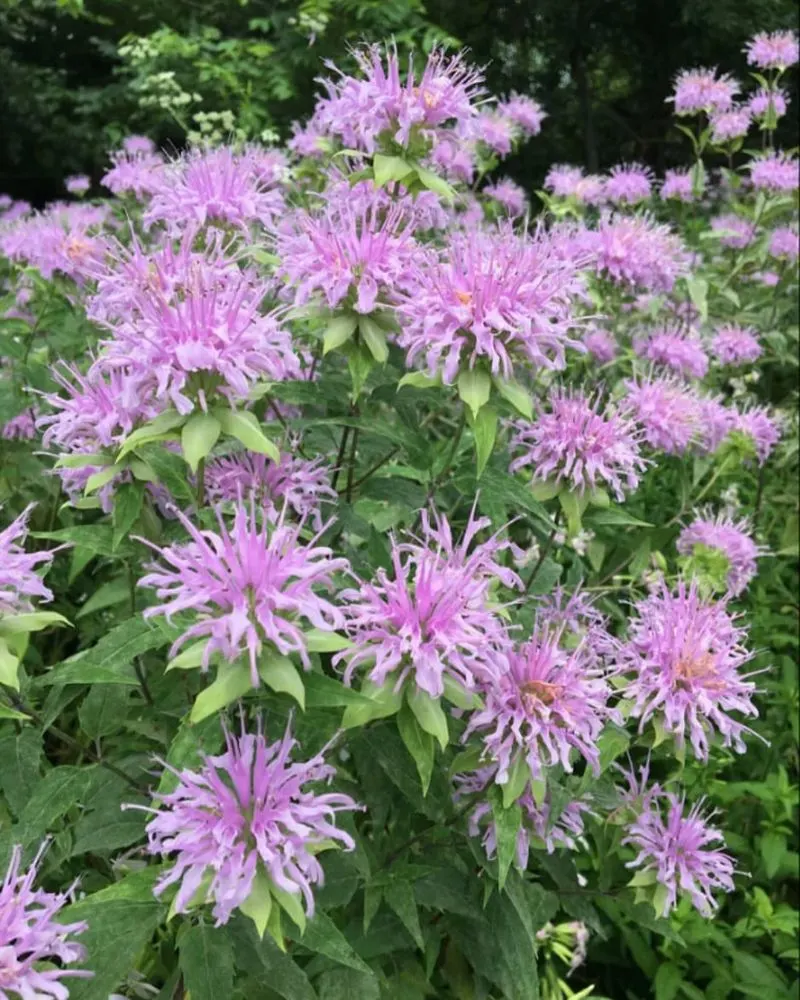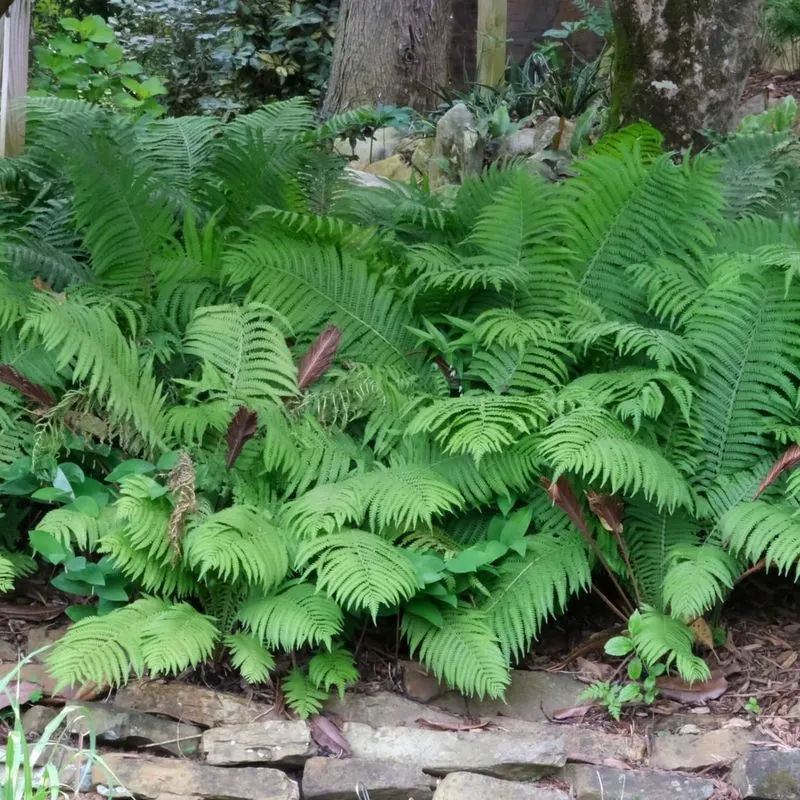In a survival garden, choosing the right plants can make all the difference, and native species often hold the key.
These 12 native U.S. plants are not only well-adapted to their environments but also provide essential resources like food, medicine, and resilience in tough conditions.
From nutrient-rich berries to hardy roots, these plants have supported generations and remain invaluable for modern-day gardeners focused on sustainability.
Whether you’re preparing for emergencies or simply looking to cultivate a garden that thrives naturally, these native plants are worth adding to your list.
Echinacea (Coneflower)

Echinacea, commonly known as coneflower, is a robust perennial native to North America. Its striking purple petals and spiky seed head make it not only a garden favorite but also a potent medicinal plant.
Historically used by Native Americans, Echinacea is renowned for its immune-boosting properties. Planting Echinacea in your garden can provide herbal remedies for colds and infections.
Its ability to attract pollinators like bees and butterflies also helps maintain a healthy garden ecosystem. Easy to grow in most soils, it’s a low-maintenance plant that thrives with little care.
American Ginseng

American Ginseng is a shade-loving herb native to the deciduous forests of Eastern United States. Recognized for its medicinal qualities, it’s a valuable addition to any survival garden.
The roots of this plant are highly sought after for their adaptogenic properties, which help the body resist stress. In a survival situation, American Ginseng can be used to brew soothing teas.
While it requires patience to grow and harvest, its health benefits are unparalleled. Cultivating it in a wooded area mimics its natural environment, promoting strong growth.
Jerusalem Artichoke

Jerusalem Artichoke, also known as sunchoke, is a tuberous perennial native to North America. This plant is prized for its edible tubers, which are rich in inulin, a type of fiber beneficial for digestion.
Easy to grow and prolific, it’s ideal for a survival garden, providing a reliable food source. The sunflower-like blooms also add aesthetic value to any garden space.
Harvesting the tubers after the first frost enhances their sweetness, offering a nutritious and versatile ingredient for soups and stews. A hardy plant, it requires minimal attention.
Pawpaw

Pawpaw trees are native fruit trees that thrive in the eastern U. S.
, producing the largest edible fruit native to North America. The fruit’s creamy, banana-like flavor makes it an exotic treat in any survival garden.
Rich in vitamins and antioxidants, pawpaws offer a nutritious food source during harvest season. Their large leaves provide dense shade, supporting other shade-loving plants nearby.
While they need specific conditions to flower and fruit, such as cross-pollination, their unique taste and nutritional value make them a worthy addition to any garden.
Elderberry

Elderberry is a fast-growing shrub known for its clusters of dark purple berries and fragrant white flowers. Native to various regions in the U.
S. , elderberries are celebrated for their immune-boosting and antiviral properties.
They can be used to make syrups, wines, and jams, which can be crucial in a survival scenario. The plant’s flowers are also edible, often used in teas and desserts.
Preferring well-drained soil and full sun, elderberry bushes are relatively easy to maintain. Their medicinal and culinary uses make them a valuable addition to any survival garden.
Wild Bergamot

Wild Bergamot, or bee balm, is a native wildflower cherished for its aromatic leaves and striking purple flowers. It thrives in prairies and meadows, offering a natural source of antiseptic and digestive aids.
In a survival garden, its leaves can be harvested to make soothing teas that ease digestive discomfort. This plant attracts pollinators, enhancing biodiversity in the garden.
Wild Bergamot prefers full sun and well-drained soil, making it an easy-to-grow, drought-resistant choice. Its distinctive smell and vibrant blooms add both utility and beauty to any garden setting.
Cattail

Cattails are versatile native plants found near water bodies across the U. S.
Known for their edible parts, they can be a crucial food source. The rhizomes, young shoots, and pollen are all edible, providing carbohydrates and nutrients.
In a survival garden, cattails can also be used for crafting and fire-starting materials. Their fibrous leaves are ideal for weaving, and the fluff can be used as tinder.
Requiring wet conditions, cattails are best suited for areas near ponds or streams. Their multifaceted uses make them indispensable in a survival setting.
Ostrich Fern

Ostrich Fern, recognized by its elegant, feathery fronds, is native to the moist forests of North America. This plant is valued for its edible fiddleheads, a spring delicacy rich in vitamins and minerals.
Growing Ostrich Fern in your survival garden ensures a renewable food source. The plant thrives in shaded, damp soil, making it perfect for forested garden areas.
When harvesting fiddleheads, it’s important to only take a few from each plant to maintain its health. Their unique taste and nutritional benefits make Ostrich Ferns a practical addition to any garden.
Serviceberry

Serviceberry is a small, deciduous tree or shrub known for its sweet, blueberry-like fruits. Native to many parts of the U.
S. , it offers edible berries that can be eaten fresh or used in pies and jams.
These fruits are a rich source of vitamins and antioxidants, ideal for boosting nutrition in a survival garden. In addition to its culinary uses, Serviceberry’s beautiful spring flowers and vibrant fall foliage provide seasonal interest.
It grows well in a variety of soils, preferring full sun to partial shade, and is relatively easy to maintain.
Yaupon Holly

Yaupon Holly is a resilient shrub native to the southeastern U. S.
, known for its small, evergreen leaves and bright red berries. This plant is unique as its leaves can be used to brew a caffeinated tea, a rarity among native North American plants.
In a survival context, having a natural caffeine source can be invaluable. Yaupon Holly thrives in various conditions, from full sun to partial shade, and is drought-tolerant.
While the berries are not edible due to their emetic properties, the plant’s aesthetic value and practical use in tea make it worthwhile.
Nodding Onion

Nodding Onion is a charming perennial known for its drooping clusters of pink or white flowers. Native to parts of North America, this plant is both ornamental and edible.
The bulbs and leaves have a mild onion flavor, making them a versatile ingredient in cooking. In a survival garden, Nodding Onion provides a perennial source of flavor enhancers.
It’s easy to grow, preferring sunny, rocky areas with well-drained soil. Its unique appearance also adds visual interest to the garden.
Maintaining Nodding Onion is straightforward, requiring minimal care.
Stinging Nettle

Stinging Nettle is often overlooked due to its reputation for causing skin irritation, but it is a powerhouse in a survival garden. This plant is incredibly nutritious, rich in iron, vitamins, and protein.
Once cooked, nettles lose their sting and can be used in soups and teas. They grow well in rich, moist soil and can quickly establish in your garden.
Besides consumption, nettles can be used to make natural dyes and fertilizers. Their resilience and multiple uses make them an asset in any survival garden.
Proper handling is essential when harvesting.

